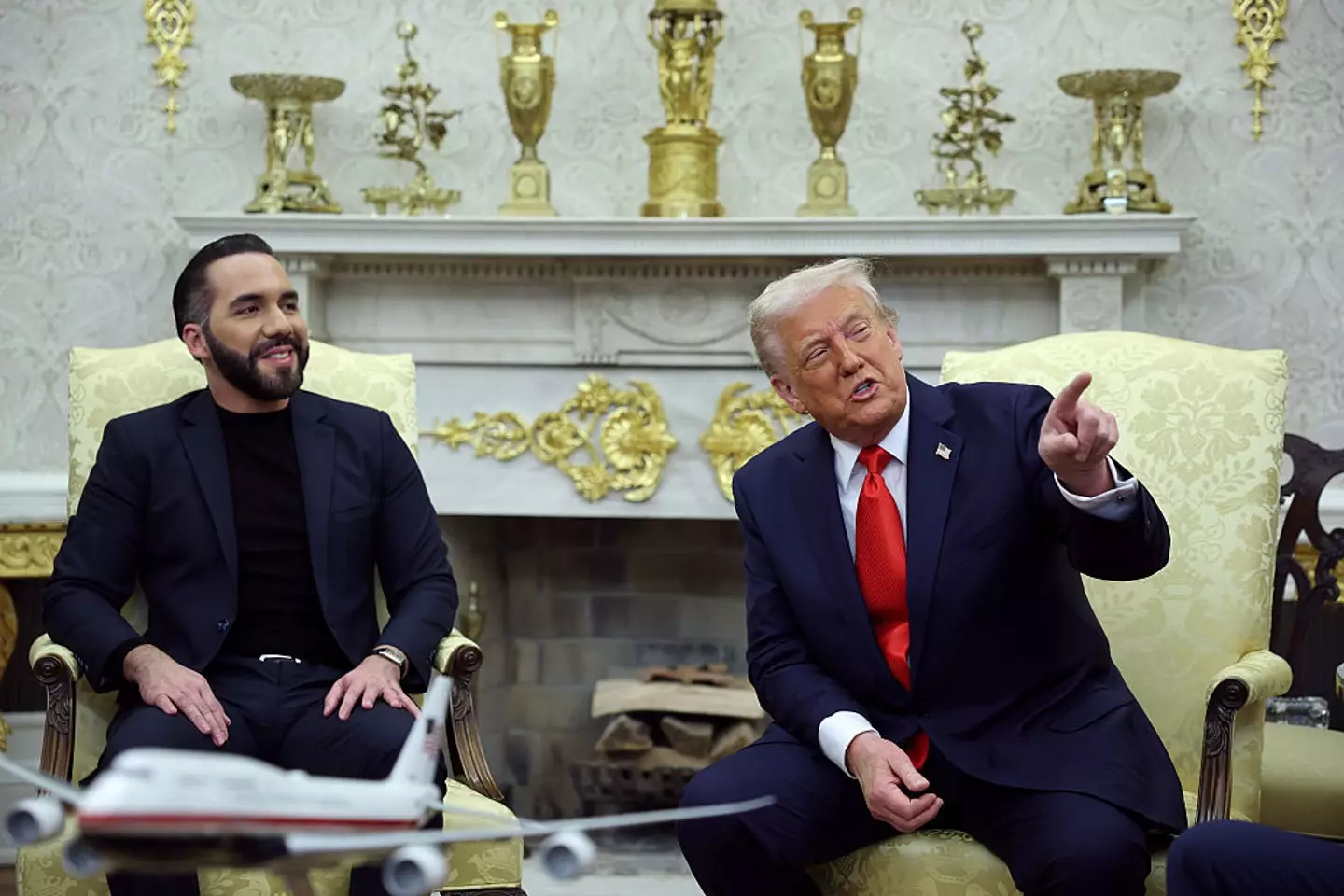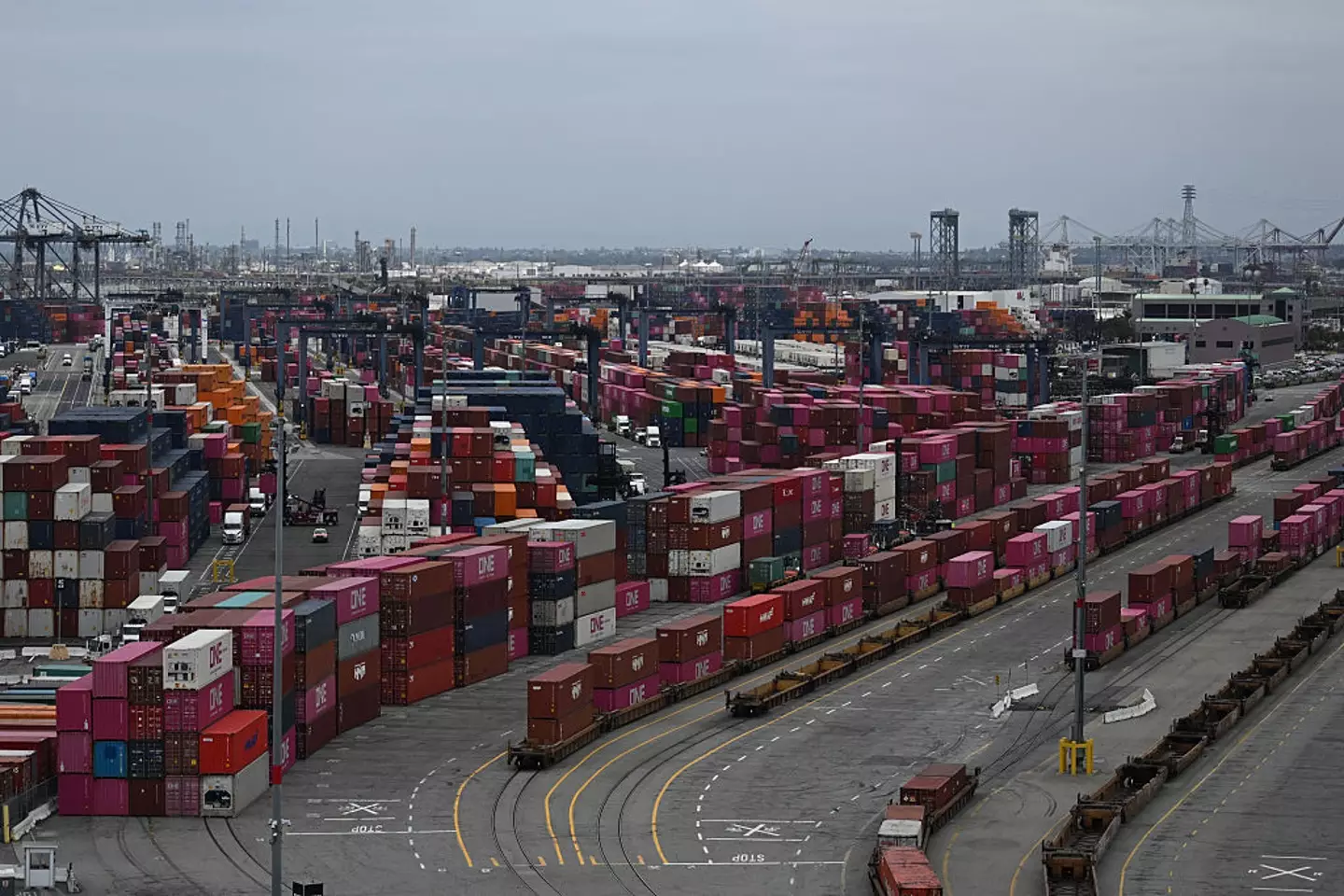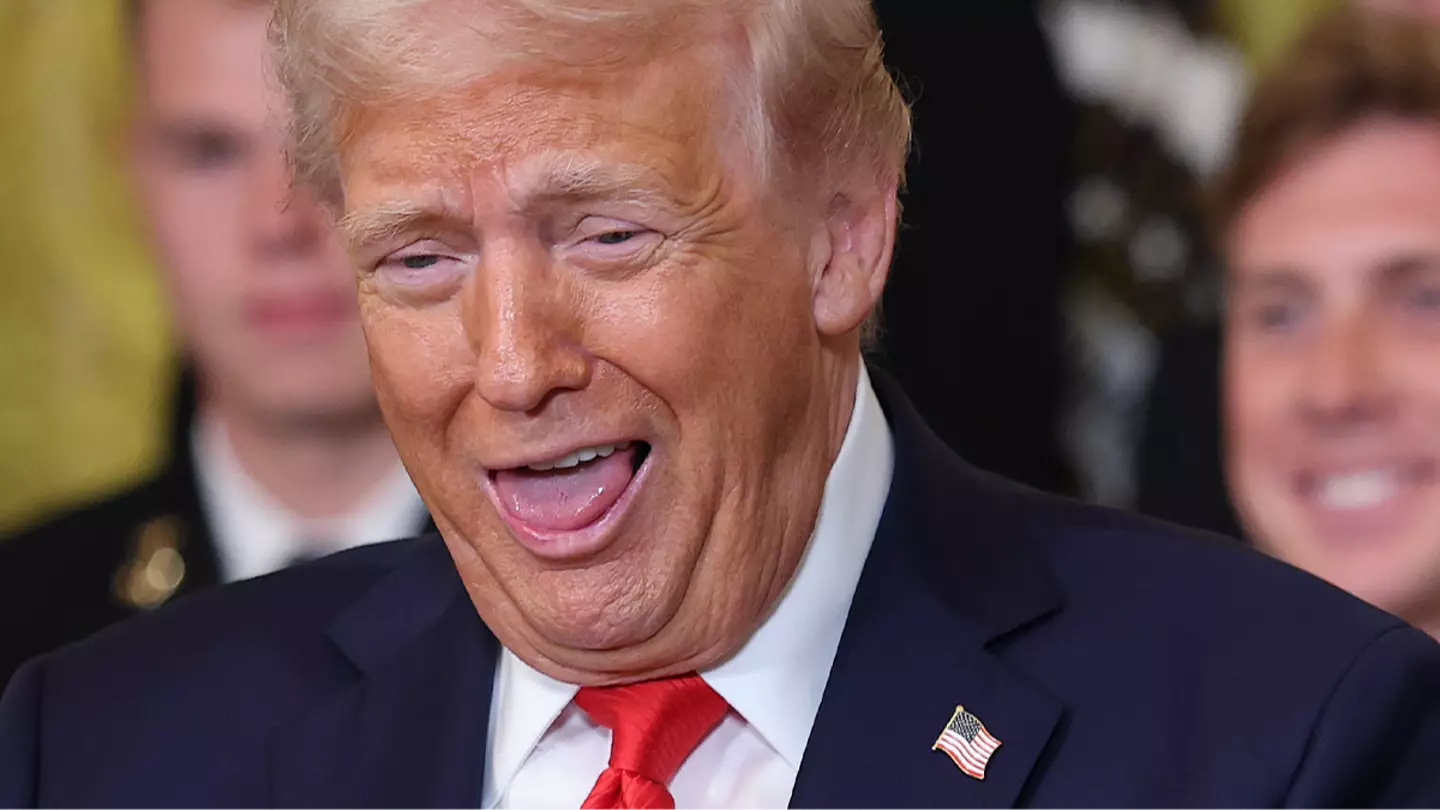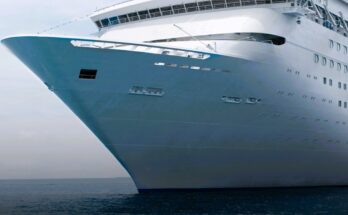The trade war between the US and the rest of the world has sent global economics reeling, but President Donald Trump has insisted America is better off for it.
The 78-year-old Republican claimed during a meeting with El Salvador’s president, Nayib Bukele, on Monday (April 14) that the US government were raking in billions of dollars every day due to the tariffs he has imposed on the likes of China, Canada and other nations.
He told reporters from the comfort of his Oval Office that America was ‘losing $2 billion a day’ and thanks to his administration, they are ‘now making $3 billion a day’.
However, an investigation into the matter by the New York Post has revealed that the figure he cited isn’t entirely true.

President Donald Trump made the bold claim that the US was raking in billions of dollars every day due to his tariffs, while speaking to reporters during a meeting with the President of El Salvador, Nayib Bukele (McNamee/Getty Images)
Customs and Border Protection (CBP) is the federal agency tasked with collecting all the tariffs from shipping containers, as well as cargo-carrying aircrafts, at the point of entry into the US.
“Since April 5, CBP has collected over $500 million under the new reciprocal tariffs, contributing to more than $21 billion in total tariff revenue from 15 presidential trade actions implemented since Jan 20, 2025,” the agency shared.
The publication worked out that if we count the separate duties imposed on goods such as foreign vehicles, aluminum and steel imports, it equates to around $250 million for the 84 days Trump had been in power from Jan 20 to April 14.
Customs weren’t the only division to find that the figures the POTUS cited fell short way short of their own, with the Treasury Department recording that the daily statement of total deposits listed under ‘Customs and Certain Excise Taxes’ for Monday was $305 million – with Tuesday recording just $250 million.
However, it could be said that US economics are thriving with the inflation rate having fallen last month to 2.4 percent, the lowest since September, having been recorded as 2.8 percent in February.

Shipping containers sit stacked on trains at the Port of Los Angeles in San Pedro, California (PATRICK T. FALLON/AFP via Getty Images)
Although, it may just be in a bubble that could soon pop – with the US stock market having plummeted on Wednesday due to restrictions imposed on computer chips shipped to China.
Which brings us onto the tariffs each nation has introduced.
Trump signed an executive order on Tuesday, ‘launching an investigation into the national security risks posed by US reliance on imported processed critical minerals and their derivative products’.
The order detailed: “China now faces up to a 245% tariff on imports to the United States as a result of its retaliatory actions.”
Meanwhile, China announced last week that it was raising tariffs imposed on the US from the additional 84 percent tariff hike to an eye-watering 125 percent.




